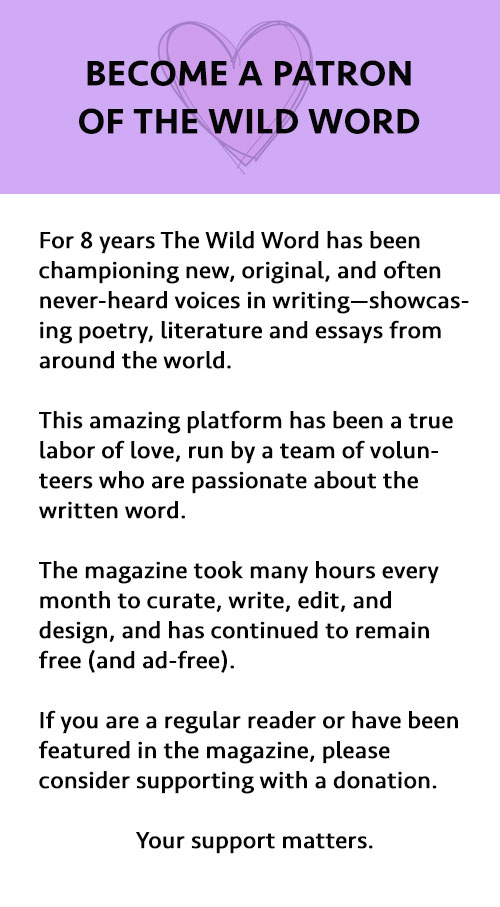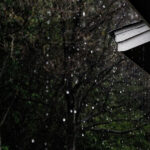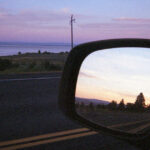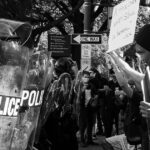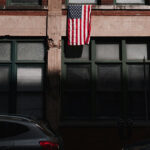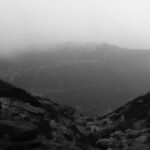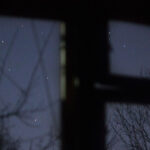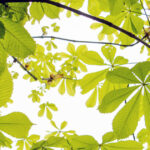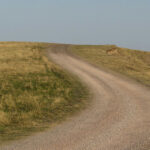ARTIST-IN-RESIDENCE
★ ★ ★ ★
CAMALO GASKIN

IN THE FACE OF FEAR: THE STORY OF A CARE-GIVER
“Nothing in life is to be feared, it is only to be understood. Now is the time to understand more, so that we may fear less.” – Marie Curie
In my work as a birth companion, I bring back my love of the written word. I spend lots of time finding ways to tell stories that help women and their partners rethink what they know about birth. I often witness the relationship between care and fear.
Environmental fear is transported by way of our stories. Stories reflect our worldview and expectations. Stories mirror our mindset. Stories reproduce our experiences. Our stories are how we experience life. Personal stories, then, also guide our care for others. During pregnancy and childbirth, it becomes pretty obvious that even without any actual personal memory of this experience, women come full of stories and expectations that eventually shape their experience. For better or worse, the stories that caregivers bring to this experience also dictate their responses. This shapes the outcome and influences new stories. Stories are our perspective and can become our experience.
I am particularly fascinated by the many ways we see and represent fear. I’m interested in what information and narratives impact our fears of birth, and what helps us work through or overcome fear.
The more time I’ve spent in the company of pregnant women and their partners, studying ethnographies of midwives, and hearing freshly trained doctors’ accounts of delivery clinics in various parts of the world, the more I’ve come to understand that our collective birth narrative is by no means a universal one.
Many of the most common accounts of birth instill a sense of anxiety in the thickest skinned of us. Every experience needs to be embraced and understood. Everyone needs a space to share their personal experience without feeling betrayed. Nonetheless the balance of stories have been overwhelmingly tilted toward troubling accounts of childbirth. This without taking into greater account the consequence of bad practices over time.
On the other hand, there are growing collections of deeply positive narratives of birth. Births in the security of our homes. Even necessary caesarian births that were guided with care, consent, a sense of control. Research and careful observation have helped us understand why some of our common practices result in complicated outcomes. These help us develop new and improved practices and stories.
Stories can reproduce physical experiences that resemble themselves. When worrying birth narratives run so deep in our society, information (or understanding) alone does not have the capacity to eradicate fear. Protective and compassionate care along with guided practices are needed to translate information about how a woman’s body usually works during birth into new stories.
For birthing women, these new stories provide a sense of empowerment in any situation. They include a wider spectrum of possibilities.
In a normal childbirth situation, these practices can help us recall this sense of ease and relaxation even in the most intense moments. These practices use tools like positive language, or little language, visualization, poses that correlate to childbirth physiology and anatomy of both mother and baby working in unison.
This kind of compassionate care that considers the impact of the stories we tell ourselves, combined with sound information, really matters. The range of birth narratives don’t only reflect negative side effects of interventions. They also resemble accounts of the normal intense emotional and physical challenge that childbirth can be for many. The challenges of a normal birth can surely play out as extremely fulfilling experiences, but may not translate in an outsider’s reading of the experience. This makes it more difficult to explain or prepare women for the things that worry us about childbirth.
Unfortunately, the differentiation between challenging experiences that result from disturbing the birth process or from a genuine complication or lack of anatomical knowledge is difficult to define. There is still so much we have yet to understand about the physiology of childbirth itself. As we continue to learn more, our care practices and stories continue to improve.
Because it is an unparalleled event in the life of a woman, we sometimes have to talk about birth metaphorically. Birth is hiking a mountain with a sometimes unpredictable weather forecast. It can be a great challenge. It can be filled with moments of inspiration. It can be rewarding. It can be triumphant. It can change our character. It can require motivation. It can be a solo expedition. It can be intensely painful. We can enter it with a kit to help us in case anything deviates from the norm. In severe cases, it can require a rescue operation. In most cases, with the right environmental conditions, mindset, and preparation, we have everything we need to successfully go through the experience.
This mountain climbing metaphor gives way to the obvious role of caregivers. Had this mountain climber a coach, the coach would expect this experience to be challenging, but they would also have experience navigating the terrain. They would provide preparatory guidance. They would be aware of the climber’s capabilities. They would understand the necessary first aid techniques and when more critical aid is required. They would only use these aids when necessary. They would be aware of the transformational character of the trek. They would be equipped with knowledge of the normal physiological responses to the challenge. They would have an overview of optimal nutrition and postures for the experience. Protecting the mindset of the climber would be prioritized. They would read signs of the climber reaching her limits. They would empathize. They would be alert to deviations from the norm. They would know when to interfere. They would be at ease with simply witnessing.
Back to Marie Curie’s statement. My response would be something like: Fear is dissolved under the auspices of awe, knowledge, and everyday practices of compassionate care.
Part of compassionate care is providing information, guidance, and allowing others to rely on their own inner tools for movement through these transitions. This familiarity can dissolve fear. Fear dwells around transition. It belongs to the unknown. Our stories and everyday practices can carry on those fears or they can help us release them.
ARTIST STATEMENT
I hold the belief that standing deeply in one’s nature has the potential to create a resonance so great that their voice can shift even the most indoctrinated of minds. The present time puts such beliefs to test. Moments like birth and death, and all those in-between eruptions of our stability connect us most genuinely to our nature. They challenge us. My time as the Wild Word’s Artist-in-Residence will give me that opportunity to feel through the eruption that is this month’s politics over the intimate and even the familial. It will give me that space to meditate out loud using my wordcraft, my storytelling learned from foremothers – known and unknown.. The mirror shall be held up to myself and the collective motherhood that’s been sent internal to self-evaluate the safety of the moment and the dignity of her archetype and her many children. It is a time for transcendence in the age of retreat and apathy towards extremism. This time will lend itself to self-possession and outright outcries.
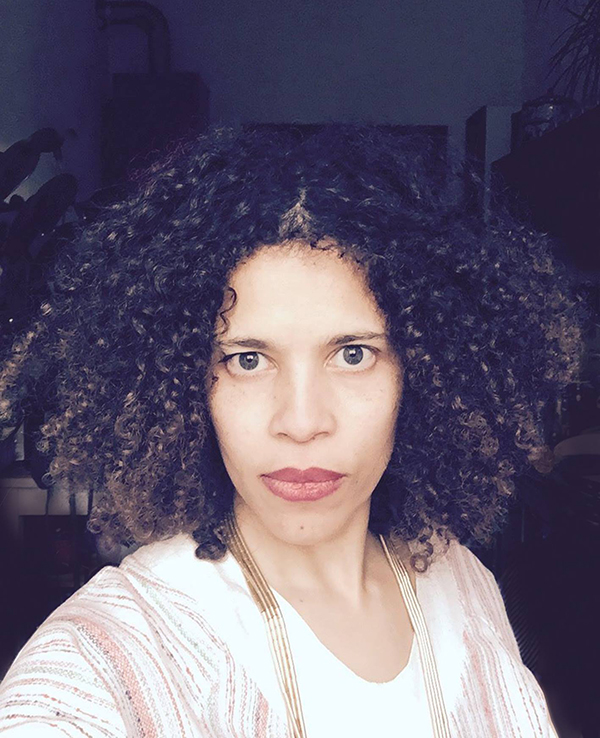
A contributor to the Huffington Post and other publications writing on childbirth, identity, and contemporary motherhood, Camalo Gaskin is the founder, host and curator of Birth to Birth Talks – a symposium series.
She is a birth companion and has spoken on the stage of the Institute of Contemporary Art in London. She was invited to be among 17 international speakers for the German Foreign Office’s event Long Night of Ideas, hosted by Savvy Contemporary with a talk titled “Human birth beyond human time”. She was a panelist at the National Press Club in Washington DC for the Primal Continuum of Human Development summit and a guest lecturer in Medical Anthropology for the International Council on Education and Exchange. She was co-founder of the Fearless Birth Film Festival and Fund, to give access to birth choices for all families. She resides between California and Berlin and revels in the lessons of living alongside two bilingual and world-curious children.

